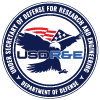
To meet current operational needs for the Department of Defense, the Trusted and Assured Microelectronics (T&AM) Program drives modernization of defense systems through access to advanced microelectronics technologies that leverage state-of-the-art (SOTA), commercially driven capabilities. The T&AM Program identifies and works to mitigate persistent threats throughout the microelectronics supply chain. From design to final package delivery, the T&AM Program uses a Quantifiable Assurance zero-trust based method to drive growth of the domestic supply chain and alleviate the DoD's reliance on sole source foundries. Under the Office of the Under Secretary of Defense for Research and Engineering (OUSD(R&E)), T&AM has undertaken multiple efforts to advance warfighter technology and strengthen our country's defenses.

Objectives
- Support microelectronics modernization and leverage state-of-the-art (SOTA) commercially-driven technology to obtain the best available products
- Mitigate persistent threats to microelectronics lifecycle
- Address entire microelectronics supply chain from design through final package delivery and advocate for U.S. based capabilities.
- Use Quantifiable Assurance zero-trust based method to assure DoD supply chain and apply across microelectronics supply chain for legacy and SOTA technology
- Reduce reliance on obsolete microelectronics
- Alleviate DoD's reliance on sole source foundries for assured SOTA microelectronics
Technical Execution Areas
The T&AM Program actively engages with policy and industrial representatives on a regular basis and serves as the Technical Execution Lead for the Strategic Radiation-Hardened Electronics Council (SRHEC). The T&AM Program consists of six Technical Execution Areas:
The Advanced Packaging and Test Technical Execution Area is focused on designing and validating a sustainable model for access to customized state-of-the-art packaging using standard commercial flows. This includes the following key lines of effort:
SHIP: State-of-the-Art Heterogeneous Integrated Packaging
STAMP: Stimulating Transition for Advanced Microelectronics Packaging
STEAM PIPE: Strategic Transition of Microelectronics to Accelerate Modernization by Prototyping and Innovating in the Packaging Ecosystem
See the section below to learn more about each of these efforts.
Advanced Packaging and Test Technical Execution Area
The State-of-the-Art Heterogeneous Integrated Packaging Program (or "SHIP") falls under the Access to Advanced Packaging and Test Technical Execution Area and tackles the issue of DoD's low-volume, high-mix requirements by leveraging commercial industry advanced packaging capabilities to realize size, weight, and power (SWAP) savings and increase system performance. The SHIP Program is part of a broader effort to enhance U.S.-based, secure, and economically viable capabilities to provide the technologies necessary to success of our warfighters.
The SHIP Program focuses on the development, delivery, and eventual transition of prototype devices into DoD systems, while demonstrating significant SWAP reductions. These initiatives are rooted in partnership between the U.S. Government, microelectronics industry leaders, and the Defense Industrial Base (DIB). Requirements were based on known threats being addressed by the lead DIB partners in an effort to drive wider modernization of DoD systems and maintain U.S. advantage. The SHIP Program is also developing a business model for the DoD to gain sustained access to customized SOTA parts in a standard commercial flow and work with the lead DIB partners for each device to make these new technologies available for a wider DoD application.
More information on the SHIP Program can be found on NSTXL's Opportunities page.  (click image for larger version)
(click image for larger version)
Office of the Under Secretary of Defense,
Research and Engineering (OUSD(R&E))
3030 Defense Pentagon, Washington, DC 20301-3030
Contact Us
Contact Us
Information for the USD(R&E):
Contact OUSD(R&E) Staff
Social Media: @DoDCTO on Twitter
For website issues: Contact Webmaster




